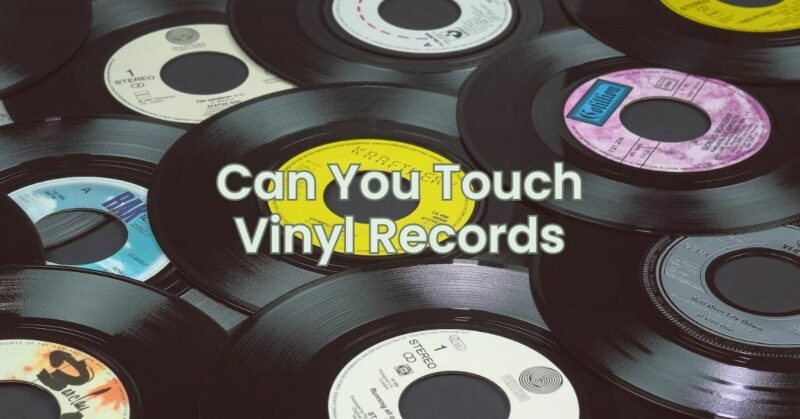Vinyl records are cherished for their unique sound and tangible experience, but many collectors and enthusiasts often wonder about the proper way to handle these delicate musical artifacts. A common question that arises is whether it is safe to touch vinyl records directly or if doing so can cause damage. In this article, we will explore the topic of handling vinyl records and provide guidelines to ensure their preservation while still allowing for an enjoyable listening experience.
The Importance of Proper Handling: Vinyl records are sensitive to oils, dirt, and dust, which can affect sound quality and compromise their overall condition. Handling records with care is essential to minimize the risk of scratches, smudges, and other damage that may impact playback quality and the longevity of the record.
Guidelines for Touching Vinyl Records:
- Hold Records by the Outer Edges: When handling vinyl records, it is recommended to hold them by the outer edges, avoiding direct contact with the playing surface. The grooves on the record contain the audio information, and any smudges, fingerprints, or debris can interfere with the needle’s tracking and cause audible noise or damage.
- Clean Hands: Before handling vinyl records, ensure that your hands are clean and free from oils, lotions, or any substances that can transfer onto the record surface. Wash your hands thoroughly with mild soap and water, then dry them completely before touching records. Alternatively, consider wearing clean, lint-free cotton gloves to minimize contact with the record surface.
- Avoid Squeezing or Bending: When holding vinyl records, avoid squeezing or bending them, as this can lead to warping or damage. Apply gentle and even pressure on the outer edges to provide stability while minimizing stress on the record itself.
- Place Records on Clean Surfaces: When setting down vinyl records, place them on clean and stable surfaces. Avoid rough or abrasive surfaces that can scratch the record. Ideally, use a soft cloth or a designated record mat to provide a cushioned and debris-free resting place for the record.
- Use Inner Sleeves and Outer Jackets: To protect vinyl records from dust, scratches, and fingerprints, always use high-quality inner sleeves. These sleeves act as a barrier between the record surface and the outer jacket, minimizing the risk of damage during storage or handling. Additionally, keeping records in outer jackets provides an extra layer of protection against external elements.
- Avoid Extreme Temperatures and Humidity: Extreme temperatures and high humidity levels can warp vinyl records, causing irreversible damage. Store records in a controlled environment with moderate temperature and humidity levels. Avoid exposing records to direct sunlight or placing them near heat sources.
- Clean Records Using Proper Methods: When cleaning vinyl records, use appropriate cleaning methods and tools specifically designed for records. Avoid household cleaners, abrasive materials, or excessive moisture that can damage the record surface. Follow best practices for record cleaning, such as using a carbon fiber brush or a specialized record cleaning solution, to maintain their integrity.
Conclusion: Handling vinyl records with care is crucial to preserving their sound quality and longevity. By following these guidelines and treating vinyl records as delicate artifacts, you can minimize the risk of damage from oils, dirt, or scratches. Remember to hold records by the outer edges, keep hands clean, use inner sleeves and outer jackets, and store records in a controlled environment. With proper handling and maintenance, your vinyl collection will provide countless hours of enjoyable listening experiences for years to come.


